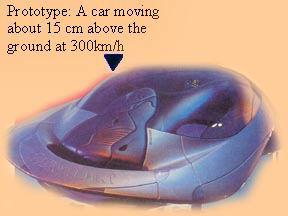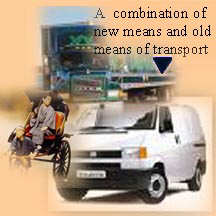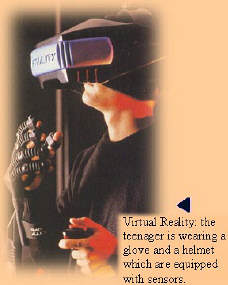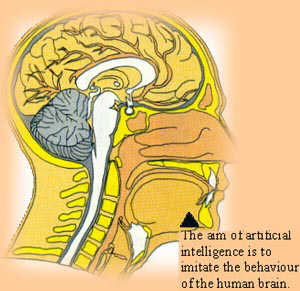Annalie Lota
Information and Communication Technology CN632
PUP Graduate School
Term Paper No. 2
-
Term Paper 2
Nonverbal CommunicationNonverbal communication is probably the oldest area of investigation into human communication. It dates from at least the 1800's, when teachers of acting and pantomime analysed how facial and body movements convey emotion. The modern study of nonverbal communication, sometimes called body language, includes two sciences called kinesics and proxemics ProxemicsThe American anthropologist Edward T. Hall who studied how gestures, posture, and other nonverbal signals were used by people to communicate their feelings and social status speaking distance developed proxemics, and other nonverbal signals were used by people to communicate their feelings and social status. People would feel uncomfortable putting most such information into words. But proxemics allows people to send and receive messages without the use of words. KinesicsKinesics is the scientific study of the body movements involved in communication, especially as they accompany speech. These movements include gestures, facial expressions, eye behaviour, and posture. The American anthropologist Ray L. Birdwhistell developed kinesics. He used slow-motion films of conversations to analyze the speakers' behavior. Birdwhistell recognized that kinesics was only one of several overlapping systems that together made up human communication. He worked hard on the structure of body movement while other scientists studied the patterns of sound constituting language. LinguisticsLinguistics is the scientific study of language. Linguists try to answer questions about language, such as how languages change and why words mean what they mean. Linguists study both their own languages and languages they do not speak. The role of a linguist when studying a modern language is to analyse the speech one or more native speakers of that language. They call such a person an informant. Since some languages have no written form, linguists must often use a set of symbols called a phonetic alphabet to write down the speech sounds of an informant. Linguists also study dead languages to trace the development of modern ones. There are two chief fields of linguistics, descriptive linguistics and comparative and historical linguistics.
Descriptive linguisticsThis is the study of the language of a single place and period. It is sometimes called synchronic linguistics. A linguist in this field tries to describe a language as it is acquired by the children of a community and used by the adults there. Such a study focuses on the ability of these people to speak and understand their language. Linguists use the term linguistic performance for any utterance people make. Comparative and historical linguisticsComparative linguistics is the study of language as it varies from place to place, from speaker to speaker, and from one period to another. This field is sometimes called diachronic linguistics. There is also an area of study called linguistic typology in which some comparative linguists attempt to formulate universally valid statements about language structure and language change. Comparative linguists would like to be able to state how language first developed and to describe the conditions that led to its invention. But written records are relatively recent because human beings have had systems of word writing for only about 5,000 years (see HISTORY for more information). People have used spoken languages far longer. As far as linguists can tell, all cultures of today have equally complex languages. For these reasons, almost nothing is known about the origin of language. Speech TherapySpeech-language pathology is also called speech therapy. It is a profession concerned with the evaluation and treatment of speech and language problems that interfere with the process of communication. Experts in this field are called speech-language pathologists. They work with both children and adults. Causes of speech defectsThere are five main types of speech defects:
Some speech defects result from a physical condition, or from severe emotional disturbance. Patients receive therapy at various clinics. History of speech therapyIn order to improve communication people have studied speech and speech problems for more than 2,000 years. Between 1700's and 1800's little progress occurred. During the 1700's, speech specialists worked mostly with the deaf. Stutterers were also given special attention and Speech therapy became a profession in the early 1900's .It was closely associated with education, psychology, speech as well as the medical profession. Human Behaviours (I)Cybernetics and Information TheoryCybernetics is the study of control and communication in machines and living things. This science deals with similarities in the functioning of human beings and machines. The use of feedback by the latter is one of their most important shared characteristics, according to the founder of the science of cybernetics, Norbert Wiener. This American mathematician, as well as some other mathematicians, had observed that both people and machines were purposeful and orderly, sought stability, and used information. By feedback is meant that information circles back to a control device to adjust behaviour. For example, when the body temperature of a human being is too high or too low, this information is fed back to the brain, which then perform proper operations to correct the temperature (see Neurology for more information). Another example is that of a thermostat which maintains a constant temperature by using the feedback obtained from the sensor. A related science known as information theory was developed about the same time by other American mathematicians. It dealt with the mathematical laws that deal with communication. Both of them have played an important part in the development of computer science, biochemistry and psychology. Human Behaviors (II)PsychologyPsychology is the scientific study of mental processes and behavior. Psychologists observe and record how people and other animals relate to one another and to the environment. By searching for patterns, they are able to understand and predict behaviours. The use of scientific methods allows them to test their ideas. Through such studies, psychologists have learned much that can help people fulfill their potential as human beings and increase understanding between individuals, groups, nations, and cultures. The research findings of psychologists have greatly increased our understanding of why people behave as they do. For example, psychologists have discovered much about how personality develops and how to promote healthy development. They have some knowledge of how to help people change bad habits and how to help students learn. They understand some of the conditions that can make workers more productive. A great deal remains to be discovered. Nevertheless, insights provided by psychology can help people function better as individuals, friends, family members, and workers. Human Behaviours (III)NeurologyNeurology is an examination of the nervous system of a human being. The examination includes an evaluation of the latter’s mental functioning, emotional state, vision, hearing, speech, strength and reflexes, coordination, and perception of touch, pain and temperature. Neurologists use specialized imaging techniques such as angiography, computerized tomography and magnetic resonance imaging to view the affected tissues and organs. Afterwards they interpret all this information to make a diagnosis and to determine treatment. Nervous SystemThe human nervous system, specially our highly developed brain, makes us different from all other animals. It functions much like a complicated computer that enables people to speak, solve difficult problems, and produce creative ideas. Information travels from a person's surroundings to the brain via the nervous system. The brain then sends instructions to various muscles via other pathways so that the body may respond to the information. Internal functions such as breathing, digestion, and heartbeat are also regulated by the nervous system. All of a person’s movements, sensations, thoughts, and emotions are products of his or her nervous system. “HOW DOES IT WORK? The brain is made up of billions of special cells called neurons or nerve cells. Cordlike bundles of neuron fibres are called nerves. The nerves form a network of pathways that conduct information rapidly throughout the body. A person’s reaction to a situation may take only an instant, but it involves many complicated processes within the nervous system. Specialized neurons, called receptors are located in the ears and eyes and the other sense organs of the body. These receptors translate events in a person’s surrounding into nerve messages, which are known as impulses. Nerve impulses travel along nerve fibres at speeds of 1 to 90 meters per second. The neurons in the brain receive the impulses, analyse and intercept the message, and decide what actions should be taken. Afterwards, the impulses travel through motor neurons. These nerve cells carry messages from the brain to the muscles and glands, which are called effectors. The effectors carry out the brain instructions and at the same time the brain sends messages to various other parts of the body. For example, when someone sees a tiger, the leg muscles respond and the person runs away, at the same time, the brain sends messages to the heart to beat faster and send more blood to the leg muscles.” SemanticsSemantics is the name for the scientific study of the meaning of words and sentences. Semantics is closely associated with the disciplines of linguistics, logic, and philosophy. One aspect of word meaning involves the ways words can be semantically related to other words. Examples of semantic relations include synonymy, or sameness (big-large); antonymy, or opposites (big-little); hyponymy, or subclass (rose-flower); and part-whole (handle-cup). Another aspect of word meaning is polysemy, the property of having many meanings. Foot and head, for example, are words with multiple meanings. The meanings of words change over time. Historical semantics is the study of these changes. For example, deer once referred to animals in general, and starve once meant die. TelepathyThe communication of thoughts, feelings, or knowledge from one person to another without the use of the senses of hearing, sight, smell, taste, or touch is called telepathy. It is sometimes called mind reading or thought transference. An example of telepathy would be if one person thought of something specific and another person stated or wrote the thought correctly. To be telepathic, however, the performance would have to be repeated and could not be explainable in any other way. Telepathy is part of the subject matter of parapsychology and is studied by scientists called parapsychologists. Parapsychologists believe that neither distance nor time affects telepathy. Thus, another person who is far away might receive a person's thoughts. Parapsychologists also believe that a person may know in advance the thoughts, feelings, or knowledge that another person will have at a later time. If true, this would be an example of precognitive telepathy. Their special qualities make them particularly useful in recording, storing, and transmitting many kinds of information. The most common uses of lasers include the recording of music, motion pictures, computer data, and other material on special discs. Bursts of laser light record such material on the discs in patterns of tiny pits. The discs with recorded music and computer data are called compact discs (CDs). A laser beam's tight focus allows much more information to be stored on a CD than on a phonograph record, making CD's good for holding data as well as music. Some CD's even can hold an entire encyclopedia. A disc used for storing data is usually called a CD-ROM (Compact Disc Read-Only Memory). Such discs store databases (large files of information held in computers) and are used widely by businesses, libraries, and government agencies. Lasers can also read and play back the information recorded on discs. In a CD player, a laser beam reflects off the pattern of pits as the compact disc spins. Other devices in the player change the reflections into electrical signals and decode them as music. More lasers are used in CD players than in any other product. Fibre-OpticsThis is a process that uses the transmission of light along a glass or Perspex fibre. Light entering one end of the fibre is repeatedly reflected on the outside of the inner part until it reaches the other end. Total internal reflection takes place as two types of glass are used and this involves very little energy lost at each reflection. Such fibres are very thinly made (less than 1 mm across) and are easily bent. Thus a cable consisting of many fibres can be laid in just the same way as normal copper ones. Up to 32 000 simultaneous telephone conversations can be carried for the same size of cable. Normal electrical signals (carrying data) are used to modulate a laser light beam that is sent to a receiver along an optical fibre. Some advantages fibre optic cables have over traditional metal cable are that firstly they can carry more data; secondly, they are less affected by interference; thirdly they are much thinner and lighter and finally data can be transmitted digitally (i.e. natural form of computer data which is in binary digit) instead of analogically. Its main disadvantage being its cost, they are very expensive and much more fragile than wires, this renders the splitting of the cable very difficult. Fibre optics is particularly popular for LANs (Local Area Networks). Telephone companies are also gradually replacing the old telephone lines with these cables and in a near future almost all communications will employ fibre optics.
|
|
Virtual RealityVirtual reality (VR) is a technology that allows you to enter and interact with a world that is generated by a computer. Special graphics, video images and stereo sound make this pretend world seem real.
The uses for virtual reality are wide ranging and cover everything from games where you can drive a car, fly a plane, ski down a mountain or track a dinosaur - to helping train doctors in the art of surgery or teaching pilots to fly aircraft safety. These computer generated worlds can be any size - as vast as the universe or as microscopically small as atoms and molecules.
|
|
Artificial Intelligence
Artificial Intelligence (AI) is the study of how to make computers do things which at the moment people are better at. It is the part of computer science concerned with designing intelligent computer systems which we generally associate with human behaviour. At the moment conventional computer still have problems learning new things or dealing with imprecise situations. It is to be stressed that human is ahead of machine intelligence, information storage and repetitive operations are for computer which can do it better, but people do intelligent activites, like understand, make sense, generate new ideas and use common sense better than computers. They are machines designed for processing a large amount of specific information. However, researchers have designed a new kind of computer that imitate the human brain to a certain extent. They are on the verge of an advanced technology that will soon change the world.
|
|
Introduction
Today's packet-switched Internet had its genesis in the American research community at a technological moment when assigning equal status to all packets made sense and worked. That best-effort, one-level-of-service-fits-all model of data transmission, however, has developed some severe shortcomings as information technology has advanced dramatically beyond its capacities in the era of the seminal ARPAnet experiment. Consider, for example, the following two scenarios. A student studying the Spanish language might be watching and listening to a digitized video of a conversation between two Spanish-speaking young people that is streaming across the Internet from a distant archive of such conversations. How instructors might locate such materials and negotiate their use by students is one of the issues being addressed by the Instructional Management Systems(IMS) Cooperative, while the indexing of such materials is a concern of both the IMS Project and the more general research community interested in the information science of digital video information. The need for differentiated network services and related quality-of-service guarantees loomed large for the leaders from the higher education information technology services and information resources communities who gathered in 1995 at a conference in Monterey, California, with experts from the network industry and the federal and regional network communities. Those differentiated-service needs and their implications for higher education inspired a group of conference attendees to initiate a grass-roots movement that evolved into the Internet2 Project. That grass-roots initiative rapidly migrated into a more broadly representative "movement" supported by Educom, FARNET, the National Science Foundation, other organizations and agencies, and the information technology industry. The resulting series of meetings and workshops motivated over 40 university CIOs to announce the Internet2 Project on behalf of their universities in the fall of 1996. Those institutions committed enough project funding to hire a project director and a staff to operate under the aegis of a small Internet2 Steering Committee. Internet2 membership had grown to include more than 100 institutions by the time a year later when the Steering Committee won the membership's approval for creating the nonprofit University Corporation for Advanced Internet Development (UCAID) in the fall of 1997.
|
|
Transport |
|
 |
Transportation helped to promote civilization. Communication among countries started to expand with land travel. A good road network today enables communication and transport to progress. Cars, coaches, buses and trains deal with passengers, whereas trucks deal with freight. Trains also carry cargo for long distance transportation. Motorcycles, mopeds and scooters are useful in day to day transportation while snowmobiles skim across ice.
|
Water transportationPeople use boats on rivers, canals and lakes. Engine powered ships and sea going vessels travel all over the world. Cargo ships together with barges, facilitate the import and export businesses. Air transportation with big airlines and supersonic jets, links major cities and provide one of the fastest means of communication while helicopters and smaller air crafts are very useful for inter-city business travels.
|
History |
|
 |
During prehistoric times people travelled mainly on foot. Goods were transported on their backs or heads and sometimes animals were used to help in the carrying of goods. By 3000.B.C wagons and sailing vessels were invented and over the centuries it improved slowly. In the middle ages, around 1500's, great improvements were brought to both land and water transport. As a result bigger ships were built but by 1700's, the steam age started. In the 1800's engine-powered vehicles were designed, leading to a revolution in communication.
|

